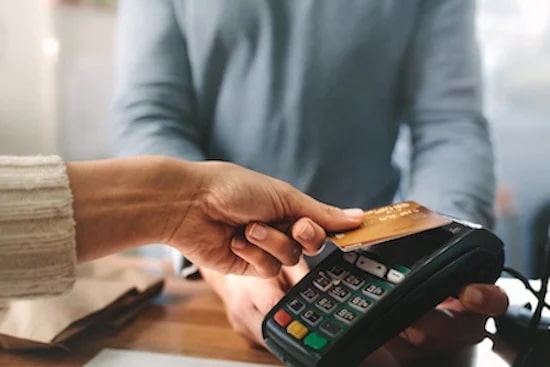Your business can’t process credit and debit cards on its own. To accept cards, you need to work with another business that handles the transactions. Payment processing can be difficult to understand, and there is a lot to consider when selecting a payment processing solution that is right for your small business.
Having to process credit cards on site has always seemed complicated. It seems as though nothing has ever been fully transparent. Fees rack up, chargebacks come in, and we learn quickly how much of a mess it can be for a small business to process credit cards in store. It doesn't have to be that way, and frankly, it really shouldn't be.
Let's start with a few definitions:
Merchant—the individual or entity that offers goods or services (you or your company)
Shopper/cardholder—customer who is purchasing the goods or services from the merchant
Merchant account—an account at a bank or financial institution that allows merchants to accept credit and debit cards
Payment gateway—the software that facilitates transaction information communication, so the shopper's money ends up in the merchant's account
Card association the network of banks that process a particular brand of payment cards (e.g., AMEX, Discover, Visa, Mastercard)
Third-party payment processor— a company authorized to process credit card transactions between buyers and sellers
This is how a card transaction works.
A merchant can apply for a merchant account with a bank, which then issues the account to the merchant. Like a bank account, this account acts as a number to identify the merchant as the recipient of a credit or debit card transaction. In the application to receive a merchant account, merchants agree to follow the regulations set by card associations. Of course, these regulations include various fees.
When a shopper purchases a product in store, the transaction information is sent to the merchant’s bank via a payment gateway, which typically transmits the information through the card association network of the cardholder's issuing bank. The issuing bank then either approves or declines the charge and bills the cardholder accordingly. Once the transaction is approved, the cardholder’s issuing bank sends the corresponding funds to the merchant’s bank via its payment processor. The merchant's bank then deposits the funds in the merchant's account; this part of the process is called the pay settlement.
A third-party processor can help small business owners save money.
Third-party payment processors enable vendors to accept card payments without having to first set up a merchant account at a bank. This is good news for small business owners, who often find that the fee structures associated with merchant bank accounts lack transparency and can make it very expensive to accept cards from their customers. Setting up an account with a third-party processor is quicker and simpler than opening a merchant bank account, and it can generate savings for merchants who process a low volume of card transactions.
These are the basics of how payment processing works for small businesses that need to accept cards on site. At VizyPay, we understand that the payments industry can be complicated, and we want to make it simpler for you. We believe the payment process should be smooth, reliable, and easy to understand.
To learn more about small business-friendly payment processing, subscribe to our blog!



.png)

.png)

.png)



-1.jpg)
.png)


-1.png?width=175&height=98&name=White%20VP%20Logo%20(1)-1.png)

